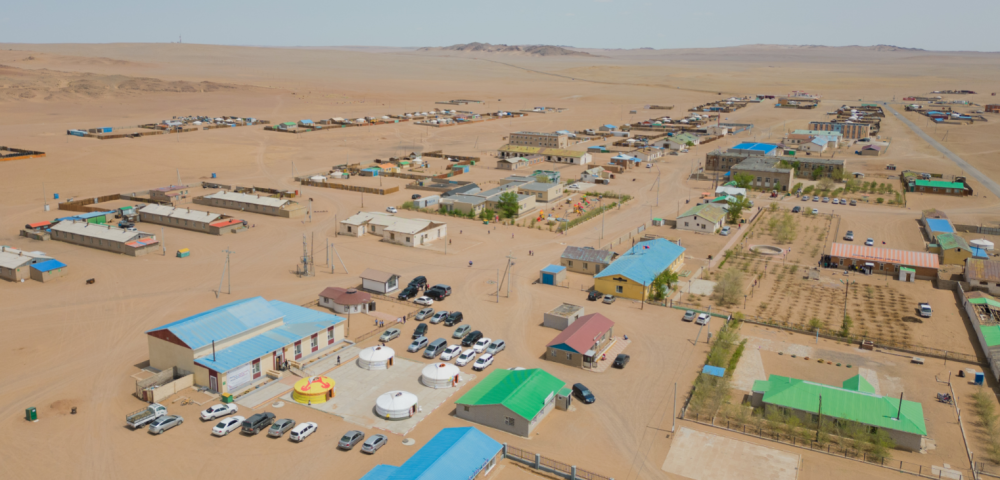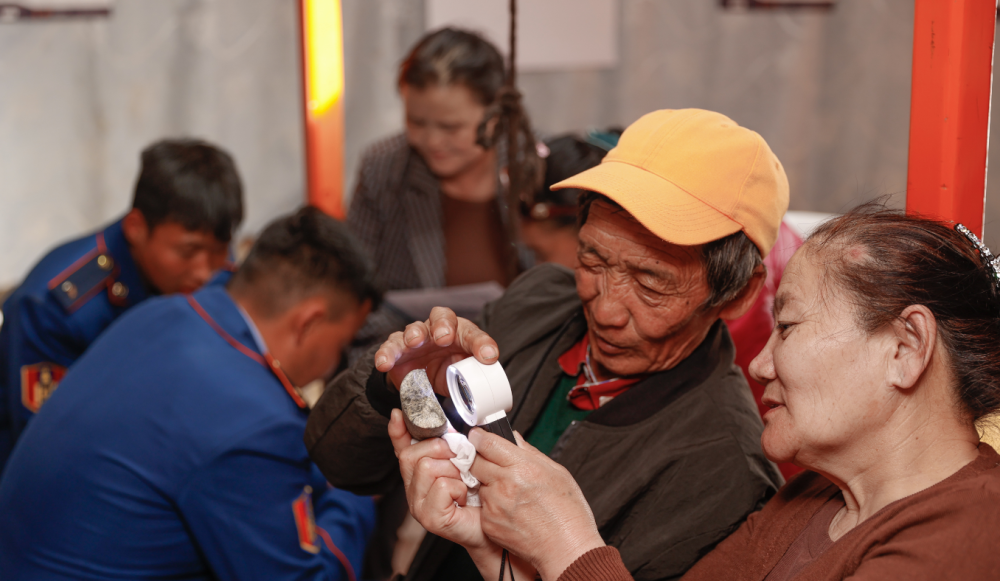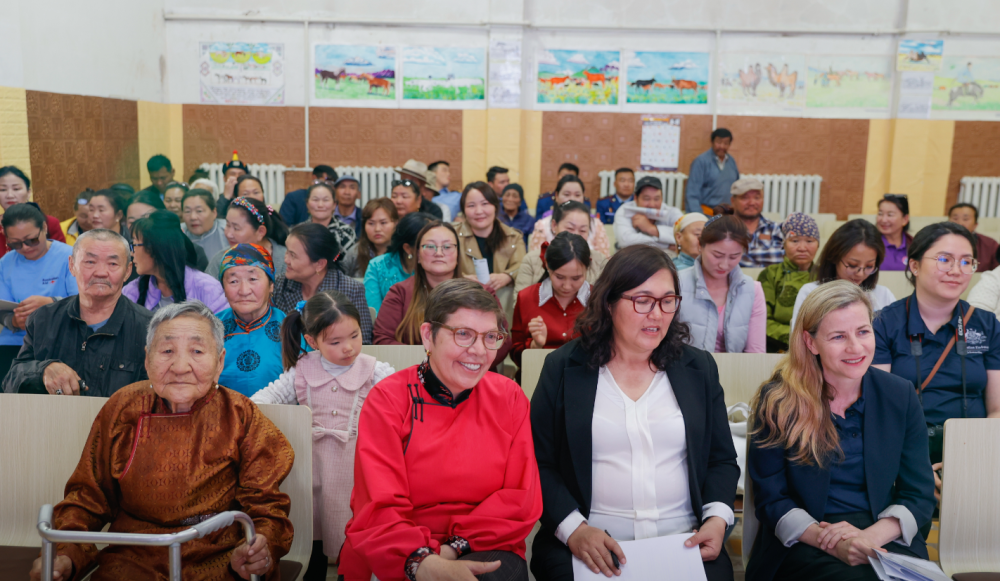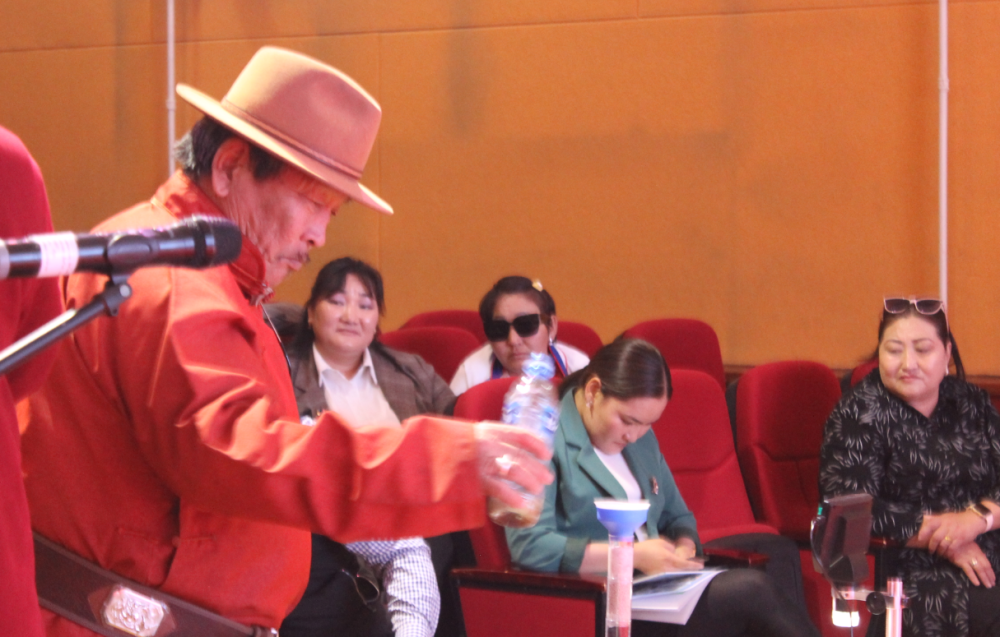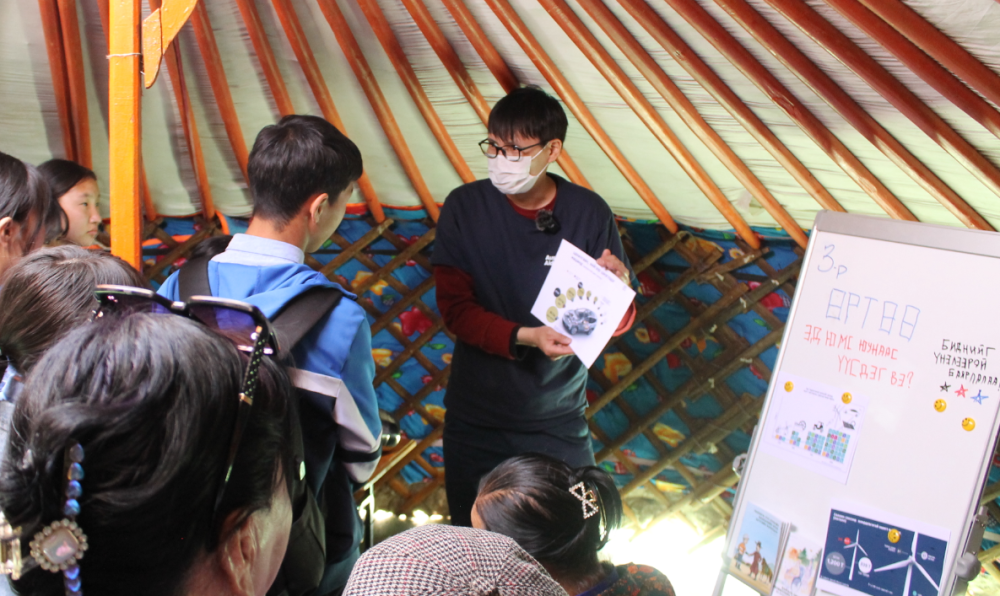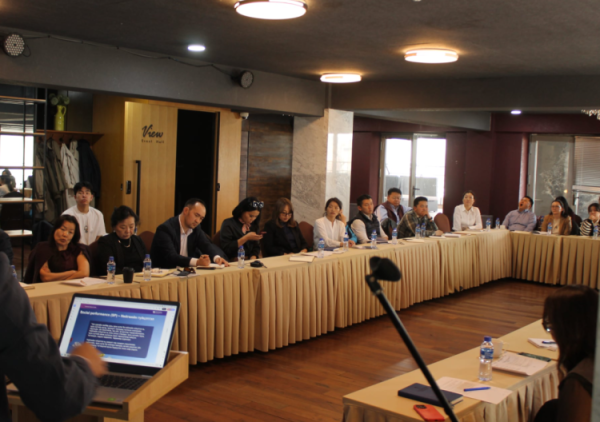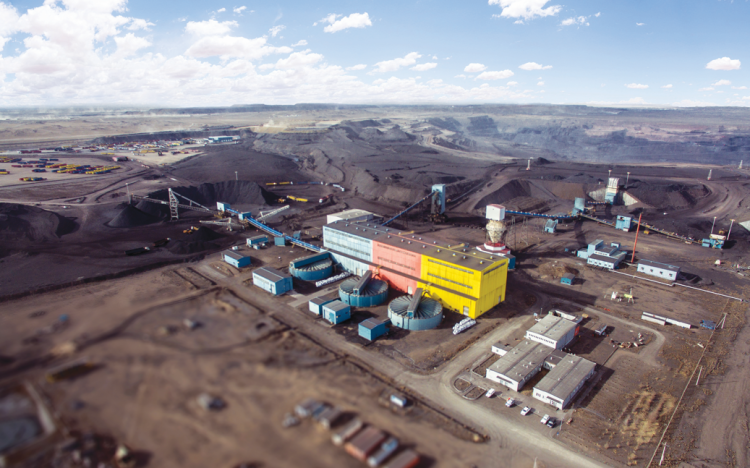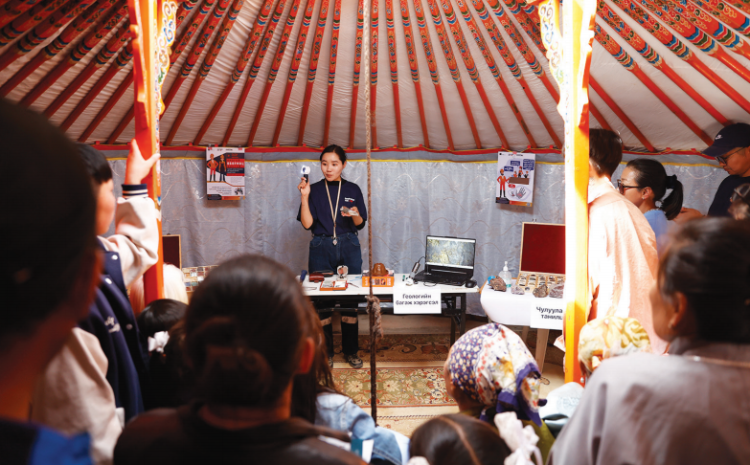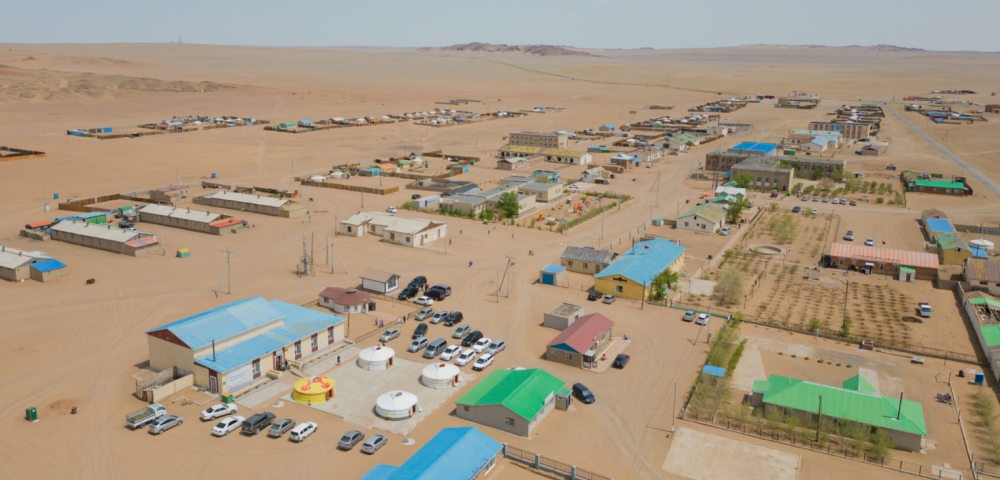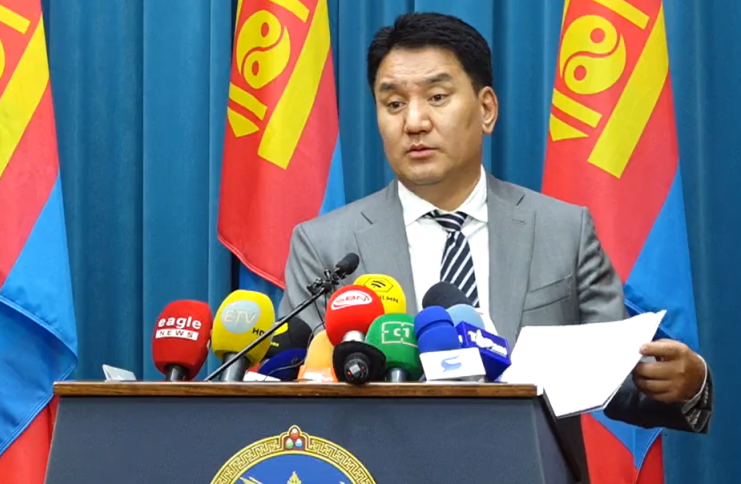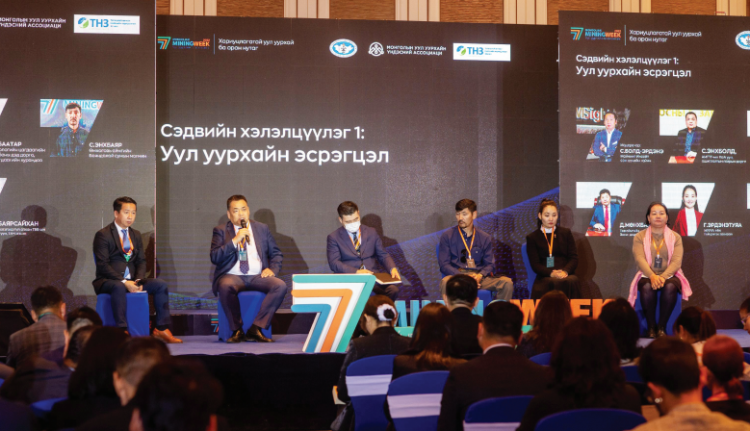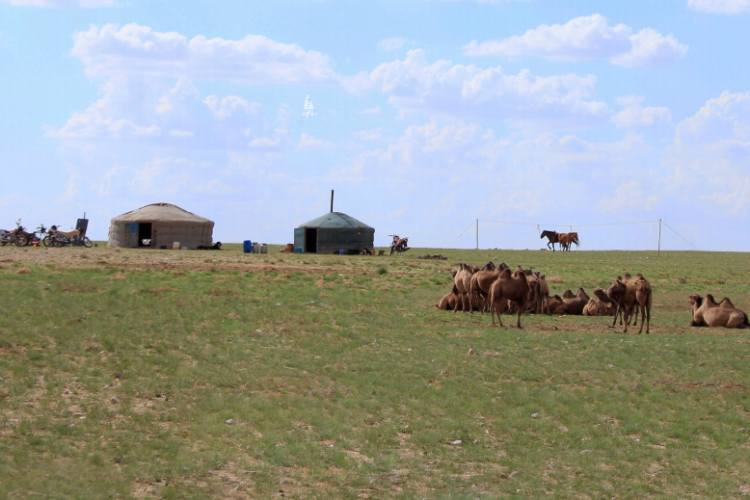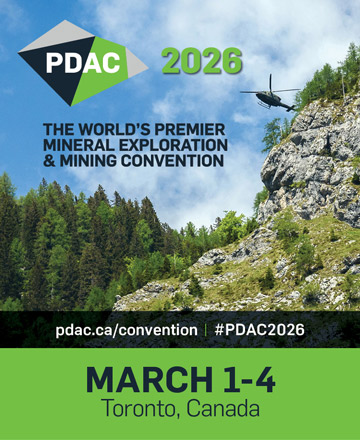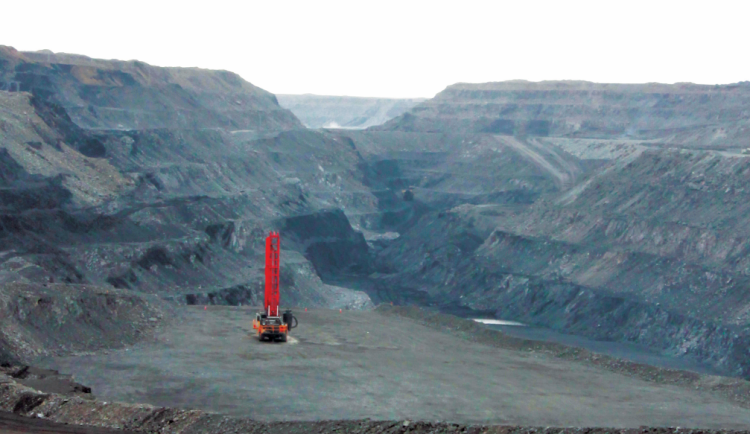-This event helps to reduce the negative attitude of local people who are less informed and opposed to mining-
In general, we lack knowledge about the type of land we have, the wealth beneath our soil, and the possibilities they present. Mineral resources play a crucial role in the production of everything we wear and enjoy. Through today's event, we gained a better understanding that minerals are extracted, discovered, mined, and utilized in various production processes. Local residents like myself have limited information about mining, which hinders our ability to fully comprehend its significance," stated Purevsamba.S, a herder from the fourth team of Khuld soum, Dundgovi Province. Bayartsetseg.B, a herder from the 1st bagh (lowest administrative unit) of Altanshiree soum in Dornogovi province, expressed, "Mining operations take place in our soum. However, we have received our first notification to understand the process of rehabilitation and whether it has been executed correctly. Moreover, as citizens, we have learned through testing whether the drinking water in our soum is safe for both humans and animals. The Gobi region, where our region is located, experiences low rainfall, and there is a lack of rehabilitation efforts by mining companies. It has been emphasized that rehabilitation is an essential aspect of their operations.
Through the training conducted during this event, I have come to comprehend that as local residents, we can only monitor and ensure proper rehabilitation if we possess knowledge and information." Anujin.O, a 7th-grade student from Elementary School in Altanshiree soum, expressed, "This event has sparked an interest in physics and chemistry among children my age. It has introduced us to the field of natural sciences and made us realize the shortage of experts in this field in our country. I visited all the news stations and learned many fascinating things. Station number 5 stands out the most for me because I answered all the questions correctly in the previous four stations and emerged as the winner." The citizens of Altanshiree and Khuld soums who took part in the “Tour to Explore Geology and Mining” shared their thoughts and reflections on the experience. The Mongolian Council for Sustainable Development and Social Responsibility (CSS) NGO, in partnership with Mining Insight Magazine, has undertaken the mission of raising awareness among local communities about the significance of the mineral resources sector.
Their objective is to provide simplified, comprehensible, and accessible information on geology and mining. This initiative has been made possible through the project titled "Increasing the value of the mineral resources sector," which is part of the Australia Mongolia Extractives Program (AMEP 2). The AMEP 2 has provided funding for a pilot project on local communication, which is currently being implemented in Altanshiree soum of Dornogovi province, Khuld soum of Dundgovi province, and Buregkhangai soum of Bulgan province. These locations were selected by the Ministry of Mining and Heavy Industry, the organization overseeing the project. The survey conducted in three soums by CSS and the Mining Insight Magazine team as part of the project revealed a significant need for the effective introduction of the mining industry to local communities residing in areas where mining activities are taking place. The survey highlighted the concerns raised by citizens regarding the lack of information exchange and participation between geology and mining companies and the local population, including herders. Altanshiree, a small soum with a population of 1,300, has gained recognition recently due to the establishment of the Oil Refinery and the Industrial and Technology Park. According to the information from the Mineral Resources and Petroleum Authority of Mongolia in March 2023, a total of 24 enterprises hold 15 licenses for land use and 11 licenses for exploration in the soum. The local community forms its understanding and perception of mining based on the abandoned pits from the Feldspar mine, located 8 km away from the center of the soum, and the excavated land. Herders, on the other hand, fear the potential loss of pasture and water resources caused by mining activities. However, now that the government has already issued licenses and mining operations have commenced, there is no active objection from the local community. Although, citizens openly express their support for responsible companies that prioritize environmental protection, make genuine contributions to the development of the soum, and create job opportunities. Khuld soum, with a population of 2,300, is home to six out of fifteen mineral licenses designated for exploitation. The main road connecting UBMandalgovi-Dalanzadgad passes through the area. However, the heavy coal vehicles traveling along the approximately 100 km road have caused significant damage, leading to a series of issues that contribute to the unfavorable attitude towards mining. From 2012 to 2019, there were active small-scale fluorspar mining activities in Khuld soum, and they became nearly independent miners. As a result, there is a prevailing perception that mining is primarily small-scale and that engaging in mining activities individually can be beneficial. Unfortunately, accidents occurred in the Fluorspar mine, leading to its closure during a state of emergency. Due to the lack of local employment opportunities, there is a considerable number of smallscale mining communities in the soum who wish to see the fluorspar fields restored and engage in smallscale mining activities. We organized the “Tour to Explore Geology and Mining” in these two distinct regions. The event consisted of five information stations designed to provide step-by-step and interconnected knowledge and understanding about the industry to the local citizens.
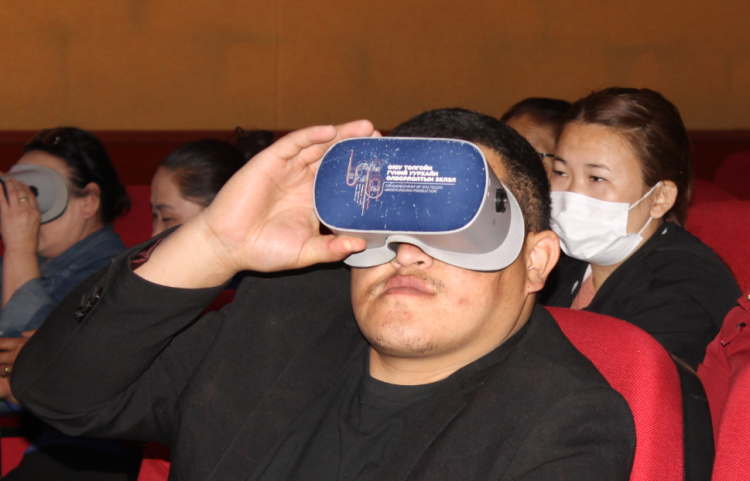
At "Station 1: let’s be aware and learn! which aimed to provide a basic understanding of geology and mining, citizens had the opportunity to watch a simplified scientific short documentary titled "Mining Close to Us: Fluorspar". Despite the limited mining activity in both soums, the presence of a fluorspar mine generated significant interest among the attendees. "I learned from the documentary that the fluorspar mined in our soum is renowned as the 'king' of mineral stone. I also heard that mining is a crucial source of raw materials for the ongoing development of the world. This day has proven to be highly valuable, particularly for future generations. It offers significant assistance to students in choosing their lifelong careers. There are numerous things that even we, as adults, were not aware of," expressed Khorloo.S, the head of the “Khuld Association of Pasture Users" NGO. At the first station, the virtual tour generated significant interest among the participants. Using VR equipment, they had the opportunity to visit the Oyu Tolgoi underground mine. They shared their opinions, stating that witnessing the immense construction and experiencing the noise of the giant machines at a depth of 1300 meters below the surface made them realize the existence of such a remarkable mine and large-scale industry in Mongolia. It left them with a sense of awe and appreciation.
At "Station 2: let's experiment! participants were introduced to the field of geological science, which involves studying the structure of the Earth and minerals. They learned that our planet, formed 4.6 billion years ago, was initially a ball of hot melt. Through volcanic eruptions, the hot melt, containing various chemical compounds, emerged on the Earth's surface, leading to the formation of rocks. Geologist Khaliunaa. N's presentation captivated not only school children but also adults. The station highlighted the significance of geological exploration, tracing back to the origins of the world and the development of the Earth, while emphasizing the importance of pursuing careers as geologists. Participants were also provided with the opportunity to examine and identify various mineral rocks under a microscope. This activity aimed to increase awareness as mining and exploration activities are expected to become more active in these areas. Davaasambuu.B, a herdsman from Buleen bagh in Khuld soum, shared his thoughts on the station, saying, "I have very limited knowledge about geology and mining. It was fascinating to observe different rock structures through the special telescope provided at this station. At first glance, they may appear like ordinary rocks, but when you examine them closely with a magnifying glass, you can see the beautiful colors. It's something I have never seen before. However, not every shining rock contains gold. There are around 8-9 types of mineral stones with yellow veins that shimmer like gold. To us, it looks like gold. This leads to false information being spread, claiming that 'our land has gold.' Therefore, the local people must have a proper understanding of our resources. This initiative is truly beneficial in helping us gain a better understanding of our situation."
At Station 3: What are things made of? various items such as toothpaste, batteries, buckets, beer, computers, mobile phones, sculpting clay, and brooches were displayed on the table. Participants were asked to identify which of these items are created from mined minerals. The majority of the participants correctly recognized that toothpaste contains fluoride, which is derived from fluorspar, as they had learned about it in the first station. "Then, one of the topics that attracted the attention of Altanshiree residents at "Station 3" was the information about the Oil Refinery being established in soum area to lay the foundation for petrochemical production in Mongolia. Products ranging from plastics to cosmetic items, including the milking buckets used by herdsmen every day, are produced through petrochemical processing. A total of 25 turbines have been installed in Sainshand Wind Park, which has the highest capacity in our country. Citizens were very interested and inquired about the information that 4 tonnes of copper, 250 tonnes of steel, 2 tonnes of rare earth elements, 3 tonnes of aluminum, zinc, and molybdenum are needed to create these giant turbines." Uranium is a raw material of great interest to the citizens of these two soums. The "Zuuvch Ovoo" uranium project is currently undergoing pilot production in Dornogovi province, while an exploration project is underway at the Khairkhan deposit in Dundgovi province. In the field of medicine, nuclear energy technology explores the properties of various materials, such as cancer treatment, metal tissue for human body implantation, rocket surfaces, and batteries. "We understood that uranium can be harmful to humans and animals, so we were initially opposed to it. However, at Station 3: What are things made of? I was very surprised to learn that uranium is used in the medical field for anti-cancer treatment," said Tsetsegmaa.B, a herder from Khuld soum. Bayartsetseg.B, a herder from Altanshiree soum's 1st bagh, who participated in learning about environmental monitoring methods with citizens, expressed his thoughts. He said, "In our province, there has been a lot of discussion about abnormal livestock births due to uranium radiation. I have heard about it on television and social media, but it was never explained by a professional. It was particularly interesting and useful to learn about monitoring radioactive rays in the body using special tools in collaboration with citizens. Altangerel.B, the initiator of the "Try it at home" project and the coordinator of "Station 4: Let's do monitoring!", conducted measurements and experiments on air, water, soil, and plants with the participation of local citizens. The citizens of Altanshiree soum measured the mineral content in water from various sources, including wells used by the people of Altanshiree soum, wells for family use, nearby springs, and commercial sources." Enkhbaatar.S, the representative of the participants and the governor of Altanshiree soum's 3rd bagh shared his thoughts. He said, "If mining companies suspect water and air pollution, it is necessary to contact the laboratory for testing. We conducted a joint experiment where samples were provided to the laboratory. In 2008, during my tenure as the governor of bagh, “Golden Sea” LLC was conducting oil exploration. That year, many horses died due to excessive weed growth. In response to citizens' complaints, the company brought in laboratory experts to analyze the organs of the deceased horses. After a month, the test results were received, which concluded that the horses had become trapped in the vegetation and died of dehydration. Due to the heavy rainfall in our area that year, I had some suspicions that the exploration company might have manipulated the test results in their favor. However, I now understand that there is no need to doubt the laboratory analysis."
At "Station 5: let’s verify our knowledge! the participants were encouraged to reinforce the knowledge they acquired from the first four stations. A fun game was introduced with the following instructions: "If you want to keep on knowing, clap your hands. If you want to keep on knowing, stomp your feet. If you want to take part, smile at each other. If you want to make an impact, do all three." This interactive game aimed to engage the participants and create a lively atmosphere to reinforce their understanding of the topics covered throughout the knowledge trip. Indeed, the song mentioned in the previous statement highlights the importance of information, participation, and influence. It recognizes that citizen participation and influence play a crucial role in addressing any misunderstandings or issues that may arise in the local community. Chantsaldulam.J, an expert on citizen participation and trainer, emphasized the significance of citizens having knowledge and information about mining and exploration companies to ensure their active involvement and influence. The station was led by Chantsaldulam.J, the participants were divided into 2-3 teams and engaged in a knowledge-testing activity using the game "Don't Be Angry". One of the questions asked was, "What is Mongolia's first copper factory?" All the participants successfully answered that it is Erdenet Mining Corporation, demonstrating their understanding and knowledge gained from the previous stations. "What deposits have been definitively canceled to secure pension loans for seniors by putting them into economic circulation?" If the people of Khuld answered the question correctly, it would be the Salkhit Silver deposit in Dundgovi province. It proved to be a challenging question for the participants. However, when asked, "Who is the current Minister of the Mining and Heavy Industry?" there was no participant who could answer the question. Similarly, no one could answer the question, "Which mineral generates the highest revenue for Mongolia's exports?" Most participants were wellinformed about the number of valid licenses in their province and the companies that hold them, as this information was provided during the event. However, it was observed that there was a lack of understanding regarding the difference between exploration and exploitation activities. In the end, teacher Chantsaldulam. J provided the correct answers to the 20 questions in the game, allowing the participants to learn from their mistakes and reinforce their knowledge. This aspect of the "Knowledge Market" station was of utmost importance. MunkhErdene.D, the head of the 3rd bagh of Khuld soum, expressed his thoughts, stating, "By participating in this organized educational event, I have obtained valuable information on how to responsibly interact with nature. I have learned that mining is not simply about excavation, but rather a process that involves various stages.
Overall, this initiative has helped alleviate the negative perception that local residents may have due to the lack of accurate information, leading to opposition against mining. We are grateful for the timely organization of this significant event."
Mining Insight Magazine №05 (018), May 2023



